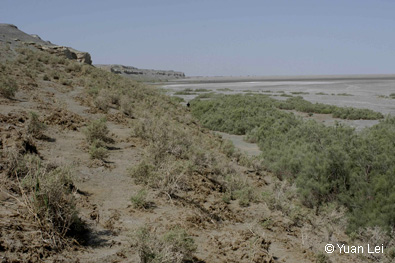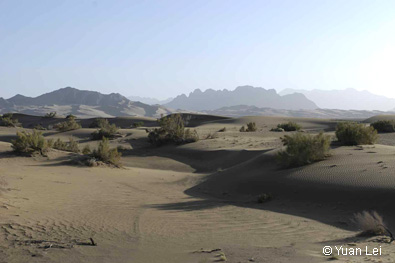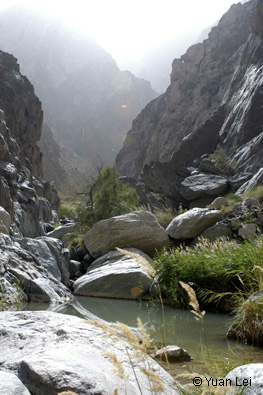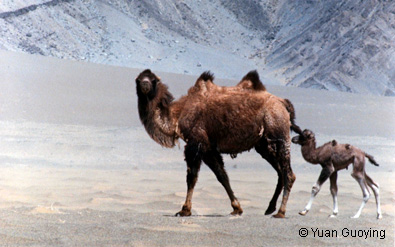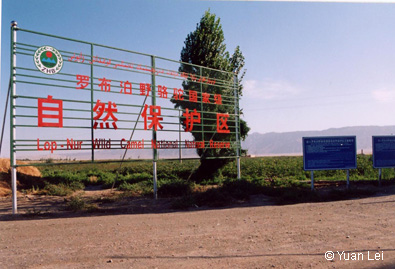Yuanlei, our Chinese EDGE Fellow, recently sent us this update of his work on the Critically Endangered Bactrian camel, just before he headed out into the field to collect more data to help conserve this remarkable species.
I am working in Xinjiang Lop Nur Wild Camel National Nature Reserve. The reserve is very large, covering an area of 78 thousand square kilometres. This reserve is in an extremely dry region in south-east Xinjiang. The driest place now is Lop Nur, but fifty years ago this place was a huge lake full of water. Now it is a haven for wild camels, so wild camels are the most important wildlife found in the reserve.
The Reserve Management Office is a sub-department of the Xinjiang Environmental Protection Bureau (XEPB). We have three sub-stations in the regions of Bazhou, Turpan and Hami. The reserve includes the mountain of Arjin, Kumutage sand desert, thousands of valleys, dry basin, and desert etc.
The wild camel is a big mammal. Their habitat can be large and they can run a long way each day. I am going to the reserve to survey the camels. The purpose of the survey is both to patrol and observe. The main survey area is Arjin Mountain. I am going to investigate the wild camel, their migration route and habitat, in both desert plant and spring areas.
Also I am going to observe other animals which I could meet on the way, for instance the activity of Kiang, gazelle, wolf etc, and how they interrelated with wild camel. The wolf is especially important in relation to the wild camel.
I have not done camera trapping, radio telemetry etc on wild camel. I hope in the future I have the chance to research the wild camel in Lop Nur reserve using these advanced methods.
We have done a great deal of public education to protect the wild camel. We have prepared different education materials for the public because the best way to protect wild camel is to improve public awareness.
Worryingly, it is estimated that less than 1000 Bactrian camel survive in the wild (in contrast there are over 2 million domestic Bactrian camels currently living in Central Asia), so conservation research and actions such as those carried out by Yuanlei are urgently required to secure the future of the wild population.
If you would like to support Yuanlei and his conservation work for the Bactrian camel please click here.
